22 June 2022, 18:06
By
Matt Hempy
INTRO
As I write this article I am sweating through my clothes in a 100-degree plus heat wave in Madrid. This bustling metropolis boasts just about everything, except air conditioning units. It is this kind of heat that makes me think that the world will never cool down. The sweltering temperatures also made me wonder; how could one cool down this apartment? Surely there are actionable steps I can take to give myself a respite, aside from keeping cold towels on my forehead.
I assume that many of us have this very same question. As summer temperatures rise higher and higher every year, cooling our homes becomes increasingly necessary. Whether you are one like me, living without AC, or you aren’t happy about skyrocketing energy bills, fear not. Through passive cooling, we can cool down our living spaces without using any devices or energy whatsoever.
Passive cooling is a way to regulate temperatures using design elements, specific materials, and nature, omitting the need for air conditioning. Passive cooling is not one silver bullet technique to cool a home, rather it is a variety of small steps that add up to decreased temperatures. Many do not have access to air conditioning units, and passive cooling is a solution to keep you safe, and curb emissions. Air conditioning units account for
a large share of energy use every year and reducing our reliance on them is essential in the wake of climate change. Most of these energy-efficient cooling techniques are available to anyone and can be implemented in your home today.
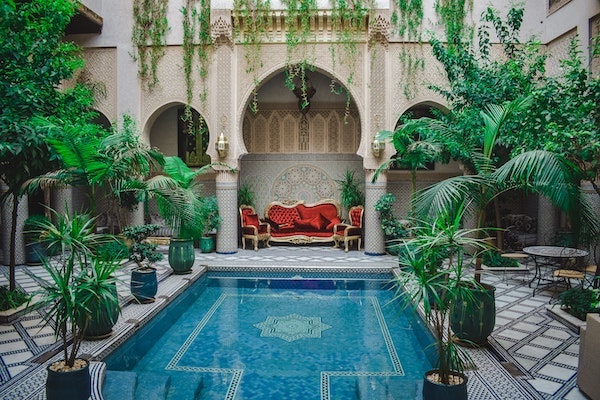
Graphic from Pexels
WHAT IS PASSIVE COOLING
To understand how passive cooling works, let's first understand why buildings and homes heat up in the first place. As sunlight hits our homes and apartments, temperatures rise through the roof, walls, and windows. After the sun goes down,
heat continues to emanate through asphalt and other surfaces. When we passively cool our homes, we are essentially doing two things: preventing this heat from reaching our homes in the first place, and decreasing the amount of heat that is already inside. The materials we use in our houses, the type of plants, and when we open our windows all play a role in passive cooling. In the wake of easily installable air conditioning units, most of these ancient cooling techniques have been lost or forgotten. Taking another example from Spain, cities in the hot South used thick-walled homes rich with vegetation centered around courtyards with water to
survive the devastating heat. Learning from our ancestors, we can cool off too.
PROTECT YOUR HOME FROM HEATING UP
Essentially all of the heat reaching your home will be coming from the outside. Subsequently, the more direct sunlight that our homes can either reflect or block, the better. Here are a few ways to equip your home or apartment to keep heat away.
ROOF COLOR AND MATERIAL
The most exposed part of any home is the roof, and the surface and color matter when talking about heat and passive cooling.
According to Smart Surfaces research, dark-colored roofs reflect only 5% of sunlight. The other 95% heats the atmosphere and your home. Light-colored roofs, however, reflect 80% of light.
How to create a cooler roof: When you think of homes in the Southwest of the U.S, you may picture terracotta roofs, and there’s a reason for that. Terra cotta has strong thermal insulation and naturally reflects light. Other materials such as metal, concrete, and even green roofs with gardens mitigate heat during the summer very well. For many of us, changing our roofs tomorrow is not viable, however, you may be able to add reflective roof paint to achieve the same goal; lowering the heat of your home and lessening the need to use air conditioning. This guide explains cool and green roofs if you are interested to learn more.
![]()
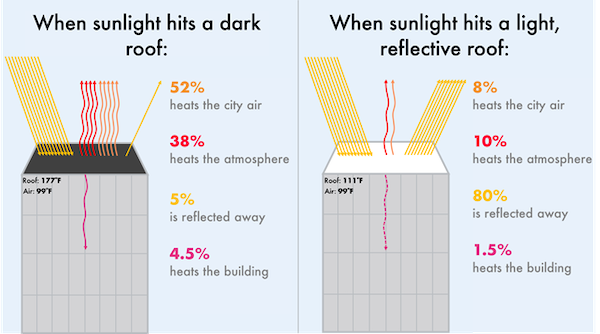
Graphic from Smart Surfaces
UTILIZE SHADE
Shade is one of the simplest and most effective methods to keep our homes cool. Blocking direct sun rays from reaching windows, doors, and walls can lower temperatures in and around your home.
According to the Dept. of Energy, shade from trees lowers air temperatures by at least six degrees.
When compared with a nearby blacktop, a grassy area under a tree can be 25 degrees cooler! To utilize this free resource, start by closing blinds and curtains that face the sun to block out the heat. Installing reflective blinds or curtains such as roman shades, louvered blinds, or window films over your windows will prevent even more light from reaching your house.
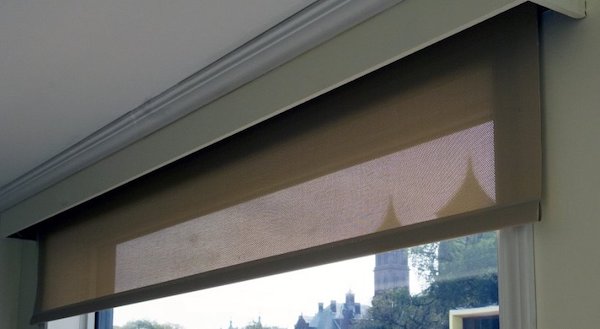
Graphic from Energy.gov
How to create shade: Adding greenery to your yard, patio, terrace, and roof (if feasible) will also lower temperatures through shade and evaporative cooling. Looking back to junior high science class for a moment, remember that when water changes from liquid to vapor, it removes heat from the air. Therefore, planting trees and plants in and around your house will lower temperatures considerably. Plant fast-growing shade trees and plants in your garden or yard to bring down surrounding air temperatures. Check out these flowers and vines to add to a trellis or lattice in your yard, which will provide shade quickly. Deciduous vines and trees (which shed their leaves in winter) allow the winter sun through and create shade in the summer. Oak and sycamore trees for example can grow tall enough for a large tree canopy and can live for many decades. This way, you can have heat from the sun only when you need it. What’s more, most fruit trees are deciduous, so your next tree will provide shade and some fresh apricots. To learn more about leveraging shading while passively cooling visit the Department of Energy recommendations.

Source from Pexels
MINIMIZE INTERNAL HEAT
After adding reflective window shades and a dedicious plum tree to the yard, let’s look at what we can do inside our homes. We can mitigate heat further by using appliances sustainably and leveraging a breeze in the right way.
COOLING DOWN INSIDE
Minimizing internal heat gain, heat incurred from appliances, devices, or our bodies, is another important step of passive cooling. Start by thinking about all the appliances and devices in your home. Which are necessary today?
How to minimize appliance heat: Try using the microwave instead of the stove or oven because microwaves emit less heat. If you are not using your TV, air-fryer, or another device, then unplug it. Similarly, switch out your current light bulbs for energy-efficient ones like LED. Cooking outdoors on a grill or line-drying clothes outside are other small ways to decrease appliance usage inside. These may be small steps, but every change decreases your energy bill and contributes to a cooler home!
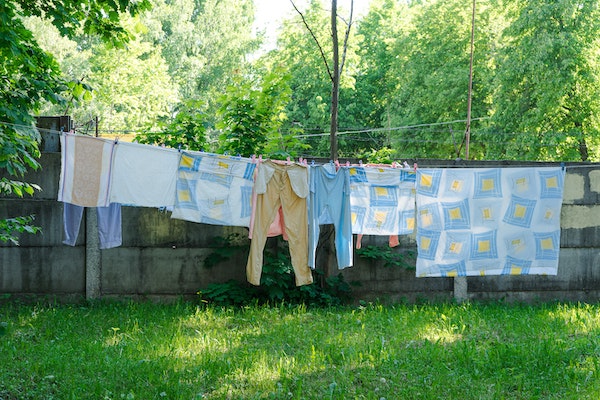
Graphic from Pexels
CROSS VENTILATION
Cross ventilation is one natural method of cooling that you can implement to move hot air inside to outside your home. Cross ventilation occurs when air moves from one side of a building to the other and cooler air from a breeze displaces hot air inside.
How to create cross-ventilation: The easiest way to do this is to simply open up windows that are across from each other in your house. If there is wind or a breeze, determine its direction and open windows to allow that air to enter. Then open a window or door on the opposite side of the room, or as close as you can to the opposite side. If there is no breeze outside, then you can create your own using a couple of pedestal fans. Place one in front of the window in the shade, facing into the room, and place another in front of the opposite window facing outside. The first fan will suck cooler air into the room, and the other fan will draw warm air and push it outside!
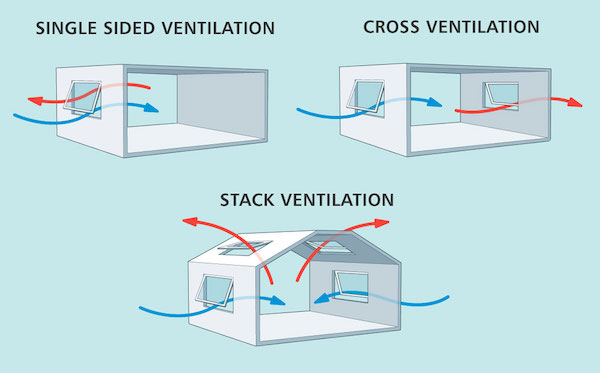 Graphic from tealproducts.com
Graphic from tealproducts.com
COOLING DOWN OUR CITIES:
To reduce the heat island effect, where heat is trapped through more buildings and concrete, mainly in urban environments, we must build more parks and green spaces, and reduce our reliance on cars through improved bike and public transportation infrastructure. Advocating for policies such as these will lower the temperatures of our cities and our homes in the process. To cool the spaces around us, we must educate ourselves and implement small steps to reach our larger goal. With some of these tips and techniques, your home will be better prepared for a heat wave.
Using design and natural forces to cool our living spaces has not changed through the centuries. Implementing some of these passive cooling techniques will offer a cooler and greener home, decreasing your energy bill in the process. I know in the last few days passive cooling has helped me through this seemingly never-ending hot spell.
There is no one size fits all solution to cooling down a home passively, just as the issue of climate change has no panacea but as we passively cool down our homes, it is also essential to use our voices and votes to push for policies that will cool down our cities.
Back to news





 Graphic from
Graphic from